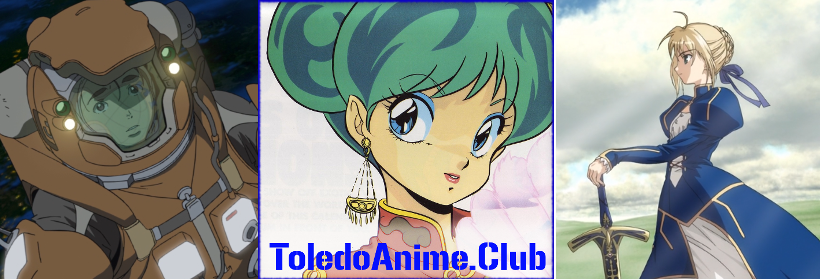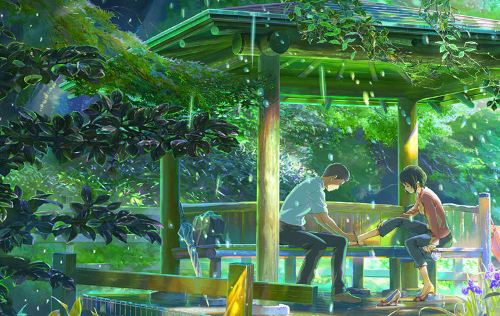Our first meeting featured Offbeat Anime – presented by Paul Kemner
Sometimes an excellent anime movie or series doesn’t become popular with fans in the US. Often the show doesn’t fit into the popular genres. Sometimes the shows use a different story structure than what’s familiar in the West. Or the plots are complicated and involve ‘too much’ Japanese culture. If you like to explore off the beaten path, here are some to check out:
Night on the Galactic Railroad (1985)
Based on the 1934 literary / spiritual classic, inexplicably with cats as the main characters. A boy accompanies his friend on a train that stops at different stations in the afterlife. Glacially-paced, but influential. Referenced by many series & manga, so you might want to watch it.
Penguindrum (2011) 24 episodes
… for example, directly references Galactic Railroad when two boys walking by discuss it. Two brothers take their terminally-ill sister to the aquarium, where they buy her an expensive penguin hat. She collapses and dies. But the hat is inhabited by the Princess of the Crystal, who tells the brothers if they find the Penguindrum, she will save their sister’s life. With the GRR references throughout, the 1995 Tokyo Sarin Attack, and weirdness like the Child Broiler, a laser slingshot that erases memories, and themes about the nature of Fate, many find the complex plot too confusing. Armed with a bit of history, and watching Galactic Railroad first, it’s definitely worthwhile.
Cat Soup (2011)
Award-winning weirdness. A boy kitten temporarily drowns in the bathtub, and sees his dying sister’s soul led away by the Buddhist reaper. He tries to get her back, and gets half her soul. They go on a quest to the land of the dead to retrieve it. Weirdness ensues.
Maison Ikkoku (1986) 96 episodes
Rarity of rarities, a romantic comedy involving ADULTS! Written by Rumiko Takahashi, creator of Inuyasha & Ranma 1/2 (considered to be the most successful female comic artist in the world), Maison is considered by many to be her best work.
Godai, struggling to get into college, falls in love with his new landlady. Kyoko married her first love, only to have him die six months later. Godai starts out with immature attitudes about love, and his kindness frequently gets him in trouble. Kyoko isn’t sure she should ever love again, or remain faithful to her late husband’s memory. Highly-recommended, and filled with humor and cliffhangers.
Hotarubi no Mori e (Into the Forest of Fireflies’ Light)(2011)
A six-year-old girl loses her way in the Forest of the Mountain Spirit, and meets a spirit who looks like a young man wearing a fox mask. He tells her he will be obliterated if he’s touched by a human. He guides her out, and they become friends. As she visits each summer, they grow closer in apparent age.
This is a precursor to Natsume’s Book of Friends– an excellent Yokai series with 74 episodes.
Garden of Words (2013)
A young man skips class on rainy mornings, to sit in a park shelter. He wants to design and make shoes, and he sketches there. He mets a woman who is drinking beer and eating chocolate, and as she leaves, she quotes a poem. On subsequent rainy mornings, they continue to meet, talk about life, and become friends.
Drop-dead gorgeous artwork, and a beautiful story. A good example of Kishōtenketsu, the 4-part Asian story structure.
Mushishi (2014) 46 episodes
Another beautiful series. Gin investigates Mushi– otherworldly lifeforms that occasionally interact with this world, often to the detriment of people who encounter them. Instead of immediately exterminating them as most mushishi do, he takes a scientific approach, investigating them and seeing if there are any alternatives first, and seeing to understand them. Often slow-paced, with moments of terror when things go wrong, it’s another show that makes use of the 4-part Asian story struture, that’s not driven by conflict.
Mononoke (2007) 12 episodes, Ayakashi: Samurai Horror Tales (2006) ep 9-11
The Medicine Seller investigates and destroys mononoke in the Edo period. Before he can unsheathe his sword, he must know how and why the mononoke was created: its form, truth, and reasoning. The plots are complex, because the people involved are reluctant to tell the truth. Artwork is influenced by woodblock prints, with sliding screens dividing the chapters.
Kuragehime (Princess Jellyfish) (2010) 11 episodes.
Five women share an apartment in Tokyo. They are terrified of crowds, men, hipsters, and social interaction, and each has her own geeky “special interest”. Tsukimi’s is jellyfish, and as she returns from a failed attempt to attend an art exhibit, she stops at a pet store and sees a jellyfish kept in conditions that will kill it. The hipster clerk isn’t interested and throws her out, but a glamorous woman (horrors!) saves the day by browbeating the clerk into giving it to Tsukimi. Later, she discovers it’s a guy. It’s a wonderful “Geek Girls Save the Day” series.

